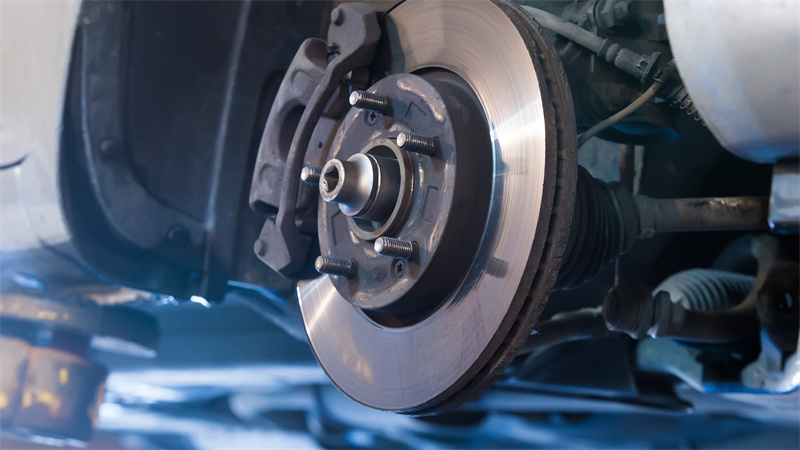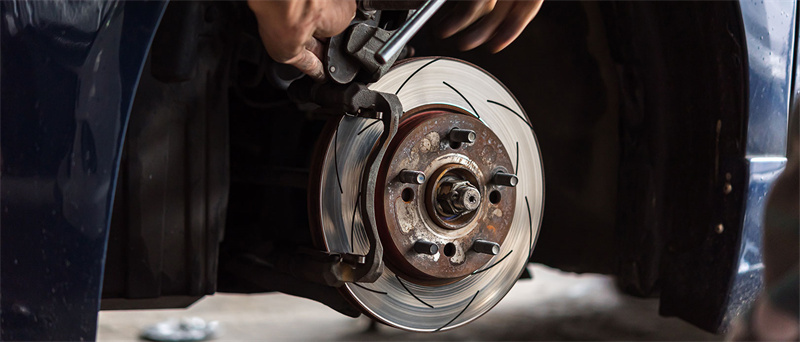Navigation of Contents
Introduction to Brake Systems
Braking systems are pivotal in ensuring the safety of passengers and vehicles on the road. Imagine cruising down the highway and spotting an obstacle ahead. Your immediate reaction is to apply the brakes, isn’t it? This instantaneous decision is safeguarded by a well-functioning brake system, which is designed to halt your vehicle efficiently and safely.
Importance of Effective Braking
Effective braking is not merely a component of safe driving but is quintessential in averting potential road mishaps. The ability to stop or slow down at critical moments can be the fine line between safety and catastrophe. But what exactly happens when you press that brake pedal, and how does your car manage to stop smoothly?
Anatomy of a Car Brake System
The car brake system, a vital component ensuring vehicular safety, is a complex assembly of interconnected parts, each playing a pivotal role in bringing your vehicle to a halt or decelerating it as required.
This system is not just a mere mechanical setup but a meticulously engineered network that involves hydraulics, friction materials, and electronic components, all working in harmony. From the moment you depress the brake pedal to the actual deceleration of the vehicle, a series of rapid-fire actions take place, demonstrating the marvel of automotive engineering.
Disc Brakes
Disc brakes, a predominant feature in contemporary vehicles, are celebrated for their potent stopping capabilities and inherent self-cleaning attributes. These brakes are designed with a brake disc (or rotor), caliper, and brake pads, each component playing a crucial role in halting the vehicle.
Not only are they efficient in terms of performance, but disc brakes also exhibit remarkable heat dissipation properties, ensuring that the braking system remains effective even under strenuous driving conditions, such as descending a steep hill or during spirited driving.
Working of Disc Brakes
The disc brake operation is captivating, showcasing a process where mechanical action seamlessly transforms into hydraulic power and, ultimately, physical friction.
The system's efficiency hinges on specific hydraulic components, each meticulously engineered to match the system's precise requirements. Among these, specially designed hydraulic hoses stand out for maintaining optimal fluid flow and pressure. This underscores the importance of selecting a reputable hose shop for high-quality, which ensures the system's integrity and performance.
Custom calipers and brake pads, tailored for each vehicle, are critical for enhancing grip and durability. Activating the brake pedal initiates the master cylinder, which propels brake fluid through these bespoke hydraulic lines to the brake caliper.
The caliper, armed with custom brake pads, clamps onto the rotating brake disc. This interaction produces the necessary friction to decelerate or halt the wheel, reducing the vehicle's speed. Throughout this operation, the braking experience remains smooth and stable, emphasizing the critical role of choosing high-quality custom components. This approach elevates performance and significantly enhances the braking system's safety and efficiency, illustrating the value of a trusted hose shop in achieving optimal braking system functionality.
Drum Brakes
Drum brakes, although considered somewhat archaic compared to their disc counterparts, still find their place in numerous vehicles, particularly in the rear wheels, due to their reliability and cost-efficient nature.
Comprising a brake drum, shoes, and wheel cylinder, drum brakes might not offer the same level of stopping power or heat dissipation as disc brakes but continue to be a viable option in various automotive applications.
Working of Drum Brakes
The functionality of drum brakes involves a different mechanism compared to disc brakes but is equally intriguing. Upon depressing the brake pedal, hydraulic pressure is generated and transmitted through brake fluid to the wheel cylinder located within the brake drum.
This action forces the brake shoes outward against the inner surface of the drum. The ensuing friction between the brake shoes and the drum decelerates the wheel, thereby slowing down or stopping the vehicle, all while ensuring a consistent and reliable braking force.
Advanced Braking Technologies
In the realm of automotive advancements, braking systems have not been left behind. Modern technologies have been integrated into braking systems, providing enhanced safety, control, and a more intuitive driving experience.
These advancements are not merely incremental but have revolutionized braking, making it more efficient, responsive, and adaptable to various driving conditions.
Anti-lock Braking System (ABS)
The Anti-lock Braking System, or ABS, is a groundbreaking technology that has significantly enhanced vehicular safety by preventing wheel lock-up during instances of emergency braking.
This system doesn’t just modulate brake pressure to prevent lock-up but also ensures that the driver retains steering control during an emergency stop, a feature that has undoubtedly prevented countless accidents.
Benefits of ABS
ABS doesn’t merely stop at preventing wheel lock-up; it brings along a suite of benefits that enhance overall driving safety. By maintaining tractive contact with the road surface, car ABS brake system ensures that the vehicle remains steerable during an emergency braking scenario, especially on slippery or wet surfaces.
This means that drivers can maneuver around obstacles while braking hard, significantly reducing the risk of collisions and enhancing driver confidence.
Electronic Stability Control (ESC)
Electronic Stability Control (ESC) is another leap in vehicular safety technologies, designed to augment a driver’s control over the vehicle, especially during extreme steering maneuvers. ESC monitors the vehicle’s direction of travel and compares it to the driver’s intended path.
If a discrepancy is detected, ESC strategically applies brakes to individual wheels, helping to align the vehicle back onto the intended path, thereby averting potential skids or loss of control.
Maintenance of Brake Systems
The meticulous upkeep of brake systems transcends mere vehicular maintenance, emerging as a non-negotiable requisite for ensuring safe and secure driving experiences. A well-maintained brake system doesn’t merely facilitate smooth stops; it is pivotal in averting potential accidents, safeguarding passengers, and enhancing the overall longevity of the vehicle.
The maintenance of brake systems isn’t confined to periodic checks but extends into ensuring that each component, from the brake pads to the hydraulic fluids, is functioning optimally, thereby guaranteeing that the system responds effectively whenever it is engaged.
Regular Checks
Embarking on a journey of regular brake system checks is synonymous with embarking on a journey of preventative care for your vehicle. Regular checks, which encompass a thorough examination of brake pads for wear and tear, ensuring brake discs are not warped or scored, and verifying that the brake fluid is at the requisite level, serve as the first line of defense against potential issues.
These checks are not merely procedural but are instrumental in identifying and addressing minor issues before they burgeon into significant problems. Ensuring that the brake pads, discs, and fluid are in optimal condition not only safeguards the efficacy of the braking system but also plays a pivotal role in maintaining the safety and reliability of the vehicle during drives.
Professional Inspections
While regular checks serve as a foundational layer of maintaining the brake system, periodic professional inspections elevate this maintenance by introducing an expert eye into the equation.
Professional inspections delve deeper, exploring areas that might be overlooked during regular checks and employing specialized tools and expertise to diagnose, and subsequently rectify potential issues. Professionals can assess the holistic health of the braking system, ensuring that every component, from the visible to the concealed, is functioning as intended.
Moreover, professional inspections can also preemptively identify areas that might pose issues in the future, thereby ensuring that the brake system not only functions effectively in the present but also retains its reliability and efficacy in the future. This dual-faceted approach of regular checks and professional inspections fortifies the brake system, ensuring it performs optimally when called into action.
Conclusion
Understanding the intricacies of brake systems not only satiates curiosity but also underscores the importance of regular maintenance to ensure safe journeys. From the traditional drum brakes to the advanced ABS and ESC, the evolution of brake systems has been monumental in enhancing vehicular safety, ensuring that your journeys are not just enjoyable but safe as well.

